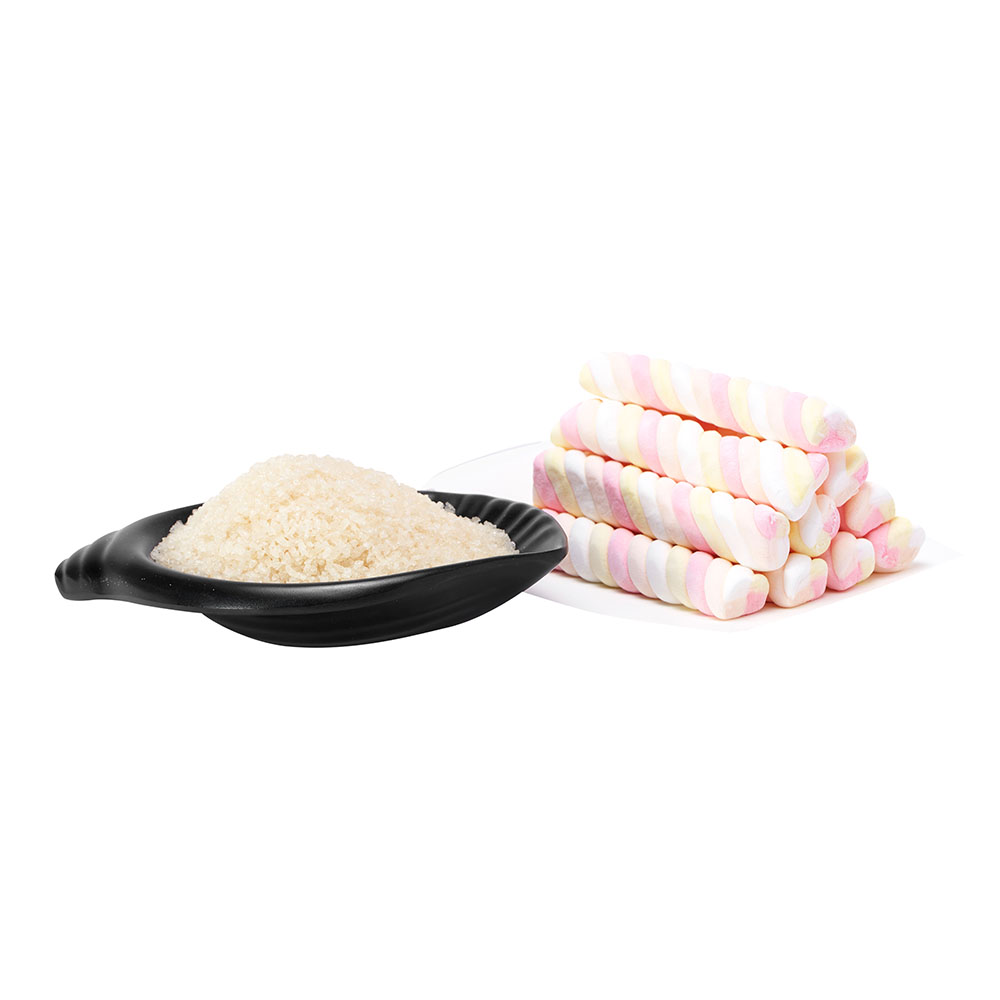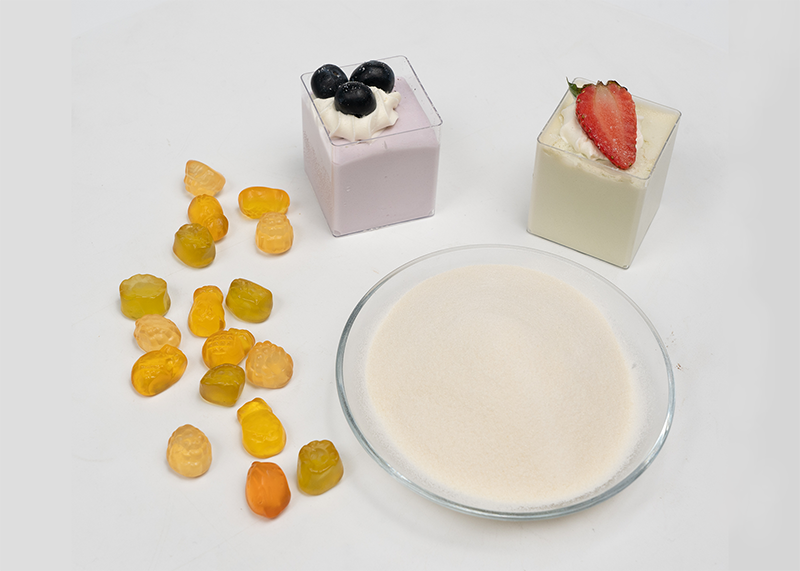Have you ever wondered about the different types of gelatin used in food? Gelatin is a protein that comes from a variety of sources, including beef, fish, and pork. It is widely used as a gelling agent in food production and is known for its unique properties in thickening and stabilizing food products.
Bovine gelatin, also known as beef gelatin, is derived from the collagen found in the bones, skin, and connective tissue of cattle. It is commonly used in a variety of foods, including gummies, marshmallows, and gelatin desserts. Fish gelatin, on the other hand, is derived from the collagen found in fish skin and bones. It is commonly used in seafood jelly products and as a gelling agent in various candies. Pork gelatin is derived from collagen found in the skin, bones and connective tissue of pigs and is used in a similar way to bovine gelatin.
One of the main advantages of using gelatin in food production is its ability to form a gel-like structure when mixed with water. This unique property makes it a valuable ingredient in the production of many food products. In addition to its gelling properties, gelatin is also known for its ability to stabilize emulsions and foams in food products, making it a versatile ingredient in the food industry. Whether you're making creamy desserts, refreshing jelly, or chewy candies, gelatin is an important ingredient in achieving the desired texture and consistency in your recipes.
In recent years, there has been a growing demand for halal and kosher certified gelatin products due to dietary restrictions and religious beliefs. This has led to the development of halal and kosher certified gelatin products made from bovine, fish and pork raw materials to meet the needs of different consumer groups. As a result, manufacturers are able to expand their product range and reach a wider audience with gelatin foods.


In addition to its use as a gelling agent in foods, gelatin has various other applications in the food industry. For example, it can be used as a clarifier in beer and wine production and as a thickening agent in dairy products such as yogurt and ice cream. It is also used in the production of edible capsules for pharmaceutical and nutritional products. With its wide range of applications, gelatin continues to play a vital role in the food industry, meeting the needs of consumers and manufacturers.
It is important to note that the use of gelatin in food is subject to strict regulations and quality standards to ensure its safety and effectiveness. Manufacturers must adhere to strict production practices and testing requirements to ensure that their gelatin products meet necessary quality and safety standards. By doing so, they can give consumers confidence in the safety and quality of gelatin used in food.
As consumer awareness and interest in food ingredients continues to grow, the food industry places greater emphasis on transparency and traceability. Manufacturers are increasingly providing detailed information about the ingredients used in their products, including the type of gelatin used and its source. This enables consumers to make informed choices about the food products they purchase and consume based on their dietary preferences and requirements.
Edible gelatin, including bovine gelatin, fish gelatin, and pork gelatin, play a vital role in the food industry as gelling agents and stabilizers. Because of its unique properties and versatility, gelatin is used in a wide range of foods from gummies to dairy products. As consumer demand for Halal and Kosher certified products continues to grow, manufacturers are expanding their product ranges to meet the diverse needs of consumers. As a result, gelatin's role in the food industry continues to evolve, providing new opportunities for innovation and product development.
Post time: Jan-25-2024







